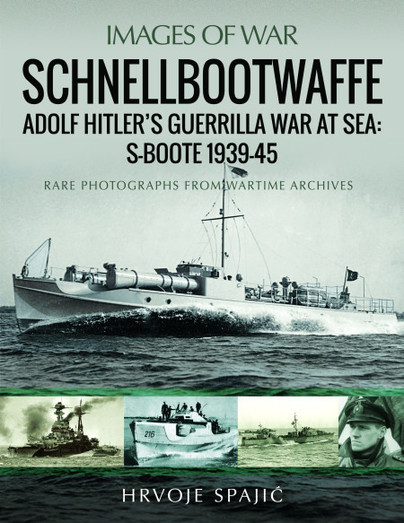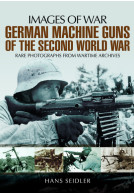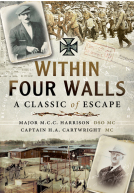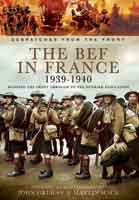Schnellbootwaffe (ePub)
Adolf Hitler’s Guerrilla War at Sea: S-Boote 1939-45
Imprint: Pen & Sword Military
Series: Images of War
File Size: 39.6 MB (.epub)
Pages: 184
Illustrations: 150 black & white images
ISBN: 9781399091763
Published: 15th November 2021
| Other formats available | Price |
|---|---|
| Schnellbootwaffe Paperback Add to Basket | £14.99 |
The Schnellbootwaffe was created in the early 1930s, before the Second World War, in concurrence with the regenerated Kriegsmarine, and young officers, most of whom learned their craft in the old Imperial Navy, would take responsibility for the operational use of these revolutionary vessels.
Working with the naval engineers of Lürssen Shipyard, the Germans designed combat weapons that were never surpassed by their opponents. After the first series of Schnellboote were launched, constantly improved versions of these vessels would follow. The Schnellbootwaffe would achieve significant victories for the Kriegsmarine at the beginning of the war by using these vessels in high-level strategies, including a style of guerrilla warfare.
The British often call German torpedo boats E-boats, and these fast vessels were a genuine threat not only to coastal trade, but also to the movement of Allied ships after D-Day. Indeed, Admiral Rudolf Petersen's flotillas remained combat-ready until the very end, even after the balance of power was in favour of the Allies.
Allied air bombardment of German torpedo boat bases from 1944 onwards failed to destroy the offensive potential of the Schnellboote and their crews. The Allied disaster at Lyme Bay at the end of April 1944 shows how this guerrilla war at sea was still dangerous, even at this stage of the war. The Allied invasions plans were not yet known to the Germans, but Eisenhower learned a great deal from Lyme Bay and the Schnellbootwaffe was still potentially dangerous right until the end of the war.
This book tells the fascinating story about these special people, whose pirate spirit and guerrilla style of naval combat is reminiscent of the ancient pirates and their own way of warfare.
Provides new readers with a useful starting point for exploring the activities of German torpedo boats during the Second World War.
The Northern Mariner
Schnellbootwaffe: Adolf Hitler’s Guerrilla War at Sea S-Boote 1939-1945 provides new readers with a useful starting point for exploring the activities of German torpedo boats during the Second World War. Serious researchers will need to look elsewhere. In comparing the role of these small, fast boats in the German Navy with that of the Allies and other forces at the time, the author sheds light on a lesser-known aspect of naval warfare during the period.
The Northern Mariner/Le marin du nord
Hrvoje Spajić's book is an original contribution to the history of Schnellbootwaffe operations in World War II. The author's interesting choice of the title Hitler's Guerrilla War at Sea 1939-45 perfectly describes his intention to place the military actions of the Schnellbootwaffe where they belong: in guerilla warfare at sea.
Zoran Delibašić, historian
Following the historical development of the organization of the first Schnellboote flotillas, Spajić describes a whole series of conflicts that were conducted by the Schnellbootwaffe. Employing a highly sophisticated guerrilla strategy, the Schnellbootwaffe posed a major threat to the Allies until the very end of World War II.
The book SCHNELLBOOTWAFFE: Adolf Hitler's Guerrilla War at Sea, S-Boote 1939-45 is a welcome book for all true WWII naval history buffs, and the book contains a large number of photographs, historical maps and the author's drawings of the Schnellboote.
"As this is an Images of War book, there are plenty of photos to inspire wargamers playing at any scale, and with new models on the market, this seems like a feasible project to get into without too much work involved."
Wargaming Illustrated, November 2021
"The images in the book are excellent and cover all levels of the action and history of the units."
IPMS/USA, April 2022
These show the boats, their targets, their bases, their crews and their varied hunters. I found it an interesting read.
Military Model Scene
Read the full review here
As featured in
The Armourer
The book of Hrvoje Spajić, which deals with one very interesting segment of Naval history from the Second World War, is an outstanding contribution of Croatian historiography to the general history of this great conflict. It is therefore very commendable that this book has been translated into English. The author already has an enviable number of books on military history from a very wide range of historical periods; from Ancient history, Middle Ages and the 20th century.
Robert Holjevac (CROATIAN INSTITUTE OF HISTORY)
Author's approach is very interesting. Spajić gives an introductionary story about the creation of this revolutionary motor torpedo boats (Schnellboot), and the role they played in the German Navy, from the time of Reichsmarine to Kriegsmarine.
The author describes in more detail the course of naval battles, especially between the German and British navies. Spajić mostly describes the conflicts in the North Sea and the English Channel between the German and British fleets. He also mentions the conflicts between the two fleets during the German occupation of Norway.
Spajić especially emphasizes the story about Rudolf Petersen, the commander-in-chief of Schnellboote (Führer der Schnellboote) from April 1942. Hrvoje Spajić also mentions how, under the leadership of Rudolf Petersen, the Schnellbootwaffe was dangerous for the Allies even when, after 1944, they completely took over the situation with their stronger capacities.
The pirate method of warfare by Rudolf Petersen is also mentioned. The author demonstrates his astonishing knowledge of so many details from many battles.
"The pictures are well-reproduced and include some fine views of S-boats."
The Naval Historical Foundation
Read the review here
Full book review available at:
Naval Historical Foundation
https://www.navyhistory.org/2022/03/schnellbootwaffe-adolf-hitlers-guerrilla-war-at-sea-s-boote-1939-45/
Hrvoje Spajić's book is a welcome project that in a scientific and, at the same time, very popular way testifies to the organization of this small branch of the German Navy (Kriegsmarine), which is responsible for organizing a real guerrilla war at sea. By pursuing a cutting-edge strategy, Schnellbootwaffe was able to make an incredible impact on Allied coastal trade, which was necessary for Britain to remain able to cope with the challenges posed by the outbreak of World War II. Describing in detail all the dangers that threatened the Allies until the end of the war, the author inevitably offers the reader a reliable source who is behind these guerrilla actions at sea and how they were conducted, and what all the Allies were forced to do to neutralize this dangerous Hitler's guerrilla war at sea.
Mario Werhas
"...the excellent text offers a succinct appreciation of S-boat warfare. "
Historical Miniatures Gaming Society, February 2022
"We are provided a full history of the development of these boats as well as operations of all the various flotillas."
ModelingMadness.com, January 2022
The author presented a whole range of events surrounding the creation of a small branch of the German Navy (Kriegsmarine), and gave a whole series of credible facts about the S-Boote operations in World War II. Describing perfectly and in detail the actions in which these revolutionary vessels took part, the author originally put forward the thesis of Hitler's guerrilla war at sea, which used all the power of a dangerous strategy that plagued the Allies until the end of the war. The rich photographic material is accompanied by the author's excellent illustrations of the S-Boote, while the maps direct the reader to the clear geographical determinants of the operations themselves. I warmly recommend the book to all interested lovers of maritime history.
Marko Samardžija
A fascinating account of Hitler's pre-war preparations in the creation of his emerging naval forces.
Books Monthly
Reading this book was an astounding experience; During the joy that was the reading of Schnelbootwaffe, Adolf Hitler's Guerrilla War at Sea, I was, as only a truly gifted reader can very rarely be, transported to those gritty yet glorious/horrible moments-in-time as they happened. The depths to which Hrvoje Spajic goes to deliver the minutiae of these battles on the seas is unmatched. Kudos to the author and a smorgasbord of delights/details to the reader. I dare one to find a more visceral book. Read it now, and be a better person for it.
Joe Salluzzo
This offering from Pen and Sword as part of the Images of War series, and covering a subject of which I know little is arguably one of the most informative offerings I have come across in this series. The text all appears to be well written, and due to being interspersed with photographs moves this offering out of the realms of a photographic reference and closer towards an informational reference. With the result it makes a much more in-depth presentation.
Armorama
Read the full review here
There are sometimes when it comes to reviewing books or history that you come across a subject you know little about. Now the Schnellbootwaffe was something I had heard about, being a small part of the German navy, the guerilla warfare arm of small quick, manoeuvrable, boats that were used for multiple uses. But it was a subject I hadn’t ever got round to exploring until now. What a cracking little book it was to start learning about these nimble and fast little vessels. From reading this book you can just see how much use the German navy got out of them, their quickness enabled them to get out early on the water or during the night in order to make quick attacks on hassling small allied shipping routes. They were also easy to use as multi-purpose vessels in that they would often be used for laying mines, and with each of these 30-40 metre long vessels being armed with guns at each end they could certainly hold their own against similar sized vessels. This was a thoroughly informative book indeed and certainly a great addition to the Images of War series.
UK Historian
Read the full review here
The book studies motor torpedo boats which were used as a powerful weapon by the German Navy in battles against British and Allied navies during World War II. The book's intended audience is primarily readers interested in British and German history and how they relate to each other. The author has put a lot of effort into studying numerous English and German sources to provide readers with an objective overview of the balance of power between the two warring sides. Through a series of interesting facts and figures, the author demonstrates how an inferior navy (Kriegsmarine) with the help of a new weapon (Schnellbootwaffe) gradually became more efficient and deadly. The author also gives a detailed report on the creation of motor torpedo boats: from their conception to their use in naval warfare. The descriptions of horrific motor torpedo boat attacks and the subsequent defence against them are impressively vivid, making the readers feel like spectators guessing the outcome of these interesting conflicts. The writing is superb, while the photos and drawings with added explanations enhance the reading experience and facilitate the understanding of the material. I would recommend the book to all World War II naval history buffs as well as to all those interested in the navies of this period.
Ivo Vistica, Zagreb, Croatia
For the German Kriegsmarine the World War Two came nine years too early, as the German fleet was still only a torso of and the nucleus for the large force envisaged by the so-called Z-Plan, to be operational only in 1948, with a total of ten battleships, twelve 20,000-tonnes and three 10,000-tonnes armoured ships, four aircraft carriers, five heavy and 22 light cruisers, 22 scout cruisers, 68 destroyers, 90 torpedo boats, 27 large, 162 medium, and 60 coastal submarines, 75 motor torpedo boats (Schnellboote), 114 larger and 48 small minesweepers, and twelve submarine chasers. As the war broke out, the Kriegsmarine had at its disposal only three 1,000-tonnes armoured ships, two just completed “light battleships” of the Scharnhorst class, two heavy and six light cruisers, with 22 destroyers and a score of torpedo boats and submarines. Thus it was not possible to wage an open naval war against the French and British fleets, and the German strategy was oriented to the merchant war again, like during the World War One, to cut the supply lines between the British Islands and the rest of the Empire, and thus defeat their adversaries.
Zvonimir Freivogel, Coburg, Germany
Luckily for the Germans, their submarines (whose number was too small in 1939) were greatly helped by a new weapon, the fast motor torpedo boats or Schnellboote (being designated by the Allies as E-boats, meaning either enemy or express boats). The submarines operated in the Atlantic, later in the Mediterranean and some of these even in Indian ocean, and the S-Boote were attacking British, Allied, and neutral shipping in coastal waters, after crossing the Atlantic and reaching the supposedly safe waters. After invading Low Countries, Belgium, and France, the S-Boote could operate directly at the British threshold in the English Channel and the North Sea.
Despite posing a serious threat to the British and Allied coastal shipping during the World War Two, the German Schnellboote and their operations were only marginally described in the English-speaking literature. The Croatian author Hrvoje Spajic is filling this gap by his book about the German Schnellbootwaffe from 1939 to 1945, including the organization of the S-boat Flotillas, and describing all relevant operation of these German torpedo-armed fast attack craft against the Western Allies, along the coasts of the Western Europe and the Mediterranean, together with the Allied countermeasures that were binding strong Allied naval and air forces almost to the end of the war. In addition to the English-speaking literature Mr. Spajic was using several German sources, enabling the reader a “view from the other side”, including names of the boats involved and their commanding officers.
German motor torpedo boats (MTBs) “emerged” as a usable weapon only after Germany was permitted to rearm its Navy in earnest in the 1930s, but the roots of their development could be traced back to the World War One and to the initial phase of the German post-war Reichsmarine, before it was renamed Kriegsmarine in 1934. Already the first design of these fast attack craft (Schnellboot has the meaning “speedboat”, and initially it was only a clandestine name to disguise the real purpose of these MTBs), designed during the inter-war years by the Lürssen shipbuilding company from Vegesack, was superior to many contemporary foreign designs. These displacement-type boats were developed for good seakeeping qualities in adverse weather and not for extreme speeds in calm seas like boats of the glider-type from the same period. Thus the German motor torpedo boats could operate in heavy seas as well, and were gradually further improved, becoming larger and faster too. A large step was the early introduction of powerful fast-running diesel engines, as diesel-fuelled boats are less prone to fire and combustion of fuel vapours then gasoline-powered boats. One handicap of the S-Boote was their relatively weak artillery armament; this was improved during the war, but not on the same scale as on the newest Allied fast attack craft like the Fairmile D motor torpedo boats (MTBs) and motor gunboats (MGBs), as German boats were designed to have a low silhouette and to be less conspicuous, and not to fight it out with the adversary during or after their hit-and-run missions. Thus they were perfect adapted for clandestine operations against enemy (and neutral) merchantmen and for laying mines in enemy´s coastal waters.
The British countermeasures against these night attackers were insufficient at first, as convoy escorts were lacking radar apparatus, and the defence of Atlantic convoys against submarine attacks was their primary role. The large-scale introduction of radar on Allied warships, together with wireless detectors, the appearance of Allied radar-equipped aircraft, and the use of strongly armed motor gunboats for defence of coastal convoys, changed the odds in favour of British and Allied naval forces. The German tactic was more successful during the first half of the war, as Germans were practising group or Rudel (Pack) attacks, with one group engaging escorts, and another attacking transport vessels. On the Allied side, the anti-E-boat groups (like the anti-submarine-warfare/ASW groups) were finally formed, including one or more frigates/escort destroyers equipped with radar, and several motor gunboats, being directed by larger escorts to their targets. The radar-equipped aircraft could operate during the night as well, preventing German sorties step by step, as the war came to the close. The Allied counterintelligence had a very important role too, reading German encrypted messages, and instructing the air and naval force when, where, and how to hit the enemy. The strategic and tactical bombings of German naval bases on the Atlantic coast, and later in Germany as well, was even more effective, taking numerous German S-Boote out before they could even leave harbour.
The sheer numbers of Allied warships and aircraft decided the outcome of the German S-boat struggle, especially after the German Luftwaffe, whose already scarce cooperation with the Navy dwindled even more as its aircraft were reduced in numbers. Thus the German motor torpedo boats were decimated at sea and in harbours as well, despite strong concrete pens being built in their bases. Their lack of radar during the first stages of the war was only slowly remedied, but never on the scale used by the Allied warships, and thus the E-boats were mostly “blind” during night clashes with the numerically superior enemy.
Thus this book is highly recommended to naval enthusiasts, historians and interested readers who want to learn more about the German fast attack craft and their operations during the World War Two, and how this danger was finally eliminated by the Allied naval and air forces.
About Hrvoje Spajić
Hrvoje Spajić is a Croatian military historian. He has published more than 150 popular-science articles and is the author of eight books on the subject of military history. Schnellbootwaffe: Adolf Hitler's Guerrilla War at Sea, S-Boote 1939-45 is his first work in English.
He lives with his family in Zagreb.






















